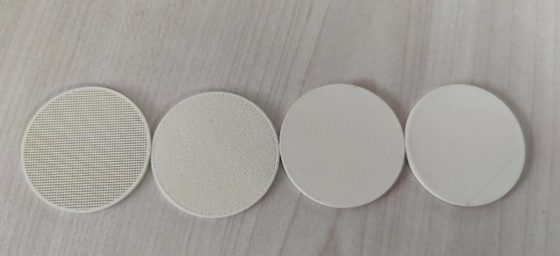
The testing
By virtue of the new Epsilon Filament of Zetamix and low-cost FDM/FFF craft, the Jiangsu Key Laboratory of 3D Printing Equipment and Manufacturing in Nanjing, China, developed a new circularly polarized dielectric helix antenna.
Before use, the dielectric properties of the new Epsilon Filament including the permittivity and loss tangent were put to test. The results proved that the new parts relative permittivity can be adjusted from about 2 to 6 by changing the infill density and flow rate, Adding to that, the results has also proven the new Epsilon Filament to be a low-loss material that is indeed very suitable for RF applications.
Picture : Printed samples with different infill densities and flow rates.
The fabrication
Afterwards, the Laboratory began the design and fabrication of the circularly polarized dielectric helix antenna, which is composed of the printed helical structure, metal ground and probe feed. Once the helix antenna was made, its impedance and radiation characteristics were put to test by the VNA (Vector Network Analyzer) and microwave anechoic chamber, and the measured reflection coefficient, axial ratio and radiation patterns at 5.2 and 5.4 GHz had shown a reasonable convenience to the simulated ones.
Picture : Measured relative permittivities and loss tangents of printed samples.
Adding to that, the proposed dielectric helix antenna can support wideband circularly polarized radiation, which is necessary for satellite communication. When compared with its metal counterpart, the dielectric one has proven to be much lighter and possesses higher radiation efficiency.
Picture : The measured process of fabricated antenna.
Picture on the left: The simulated and measured reflection coefficients and axial ratios of the antenna
Picture on the right: The simulated and measured radiation patterns of the antenna. (a) 5.2 GHz; (b) 5.4 GHz